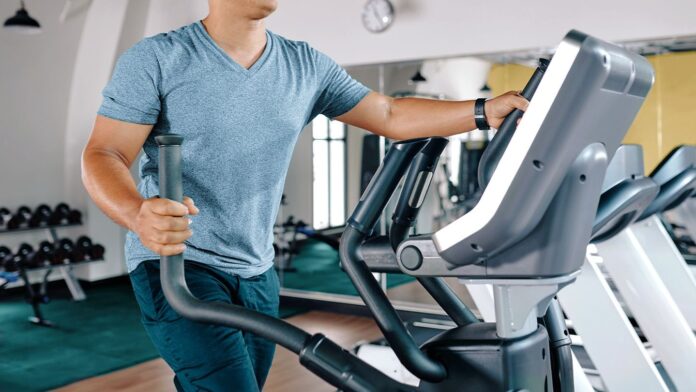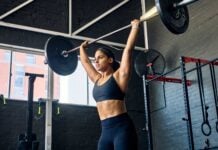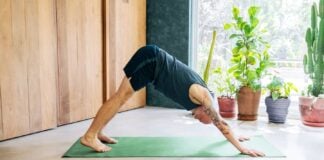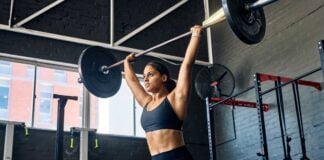Want stronger abs? Forget endless crunches – gym machines can help you build a rock-solid core in dynamic ways. From cardio to strength training, certain machines engage your abdominal muscles more effectively than traditional exercises alone. Here’s how to maximize your core workout with the right equipment.
Why Gym Machines for Abs?
While planks and crunches are effective, gym machines provide unique challenges that target your core in different ways. Cardio machines stabilize your body, forcing constant engagement, while strength machines isolate and overload abdominal muscles. This variety can accelerate results and prevent plateaus.
4 Cardio Machines for Core Engagement
Cardio isn’t just about heart health; it’s a surprisingly effective core workout. Machines like treadmills, ellipticals, and stationary bikes require constant stabilization, activating your abs without direct isolation.
- Stationary Bike: Cycling forces your core to stabilize your pelvis, keeping your hips square in the seat. This constant engagement strengthens deep abdominal muscles.
- Elliptical: The elliptical engages your core to maintain upright posture as you move your arms and legs. Lean forward less to maximize abdominal activation.
- Treadmill: Running or walking on a treadmill engages your core for posture and force transfer between upper and lower body.
- Rowing Machine: Rowing strengthens your back and front torso. Correct form (straight but slightly leaned-back posture) ensures your abs work hard.
4 Strength Machines for Targeted Core Work
Strength machines allow you to overload abdominal muscles in ways free weights can’t. These machines help you build a stronger core in a controlled environment.
- Cable Machine (Pallof Press): The Pallof press resists rotation, forcing your core to stabilize. Stand with the band taut and press your arms forward without twisting.
- Pull-Up Bar (Hanging Leg Raises): Hanging leg raises work your abs while stabilizing your body. Even if you can’t do pull-ups, hanging engages your core.
- Captain’s Chair (Vertical Leg Lifts): The captain’s chair isolates your abs. Lift your legs with bent knees, keeping your core braced.
- Decline Bench (Sit-Ups): The decline bench increases gravity’s resistance, intensifying your sit-ups. Hook your feet in the pads and lift your torso in a controlled motion.
Maximize Your Core Workout
To get the most out of these machines:
- Focus on Form: Maintain proper posture and engage your core throughout each exercise.
- Control Your Movement: Avoid momentum; slow, controlled movements maximize muscle activation.
- Progressive Overload: Gradually increase resistance or reps to challenge your muscles.
The Bottom Line
Gym machines aren’t just for building bulk; they can be powerful tools for core strength. By incorporating these machines into your routine, you’ll engage your abs in dynamic ways, accelerating your progress and building a stronger, more stable core.
Editorial Sources:
Everyday Health follows strict sourcing guidelines to ensure the accuracy of its content, outlined in our editorial policy. We use only trustworthy sources, including peer-reviewed studies, board-certified medical experts, patients with lived experience, and information from top institutions.
Resources:
- Core Exercises: Why You Should Strengthen Your Core Muscles. Mayo Clinic. March 25, 2025.
- Muyor JM et al. Evaluation of Dynamic Spinal Morphology and Core Muscle Activation in Cyclists: A Comparison Between Standing Posture and on the Bicycle. Sensors (Basel). December 1, 2022.
- 10 Ways an Elliptical Machine Benefits Your Health. Cleveland Clinic. October 22, 2024.
- Olowe OO et al. Effects of Combining Core Muscle Activation With Treadmill Walk on Endurance of Trunk Muscles: A Pilot Study. Nigerian Journal of Experimental and Clinical Biosciences. January-March 2021.
- Catch, Drive, Finish and Recover! The Top 7 Benefits of Rowing Machines. Cleveland Clinic. June 27, 2024.
Meet Our Experts:
Kara Andrew, RDN, LDN
Medical Reviewer
Rachel Grice, CPT, RYT-200
Author




















